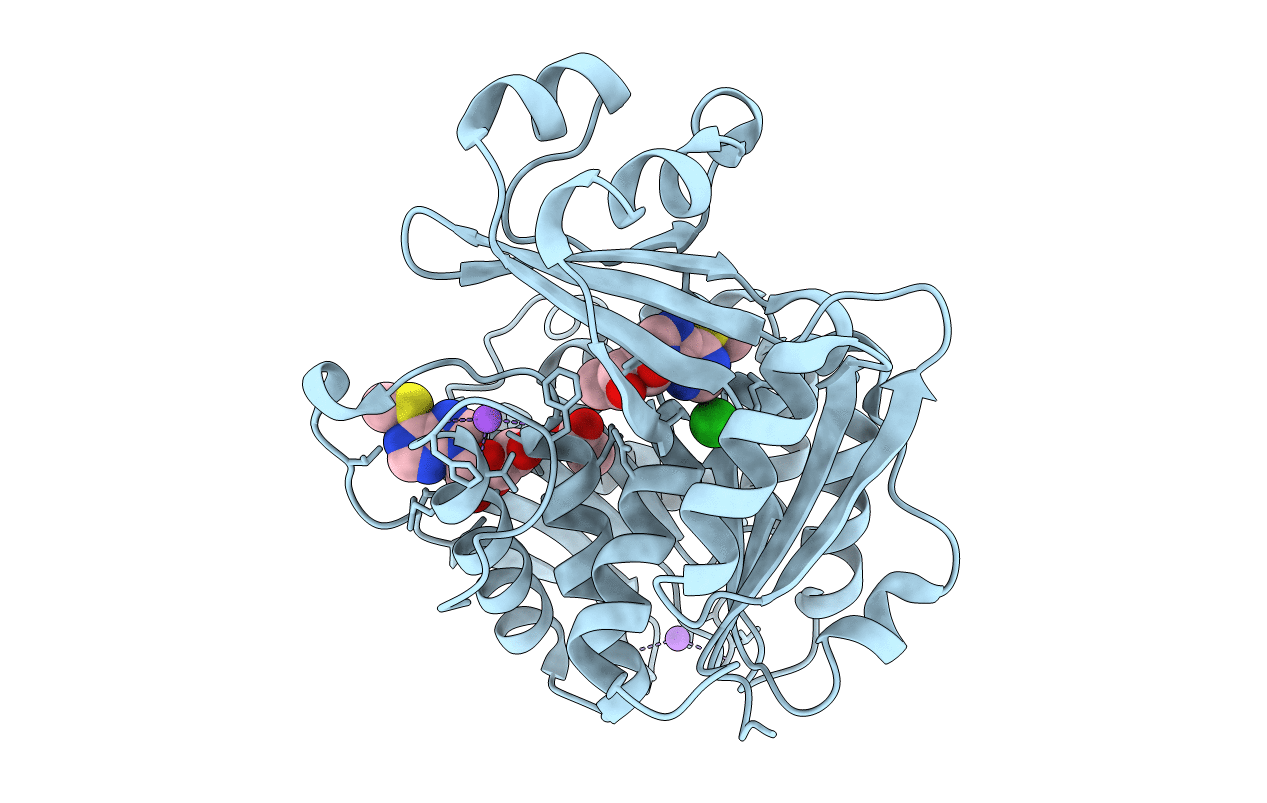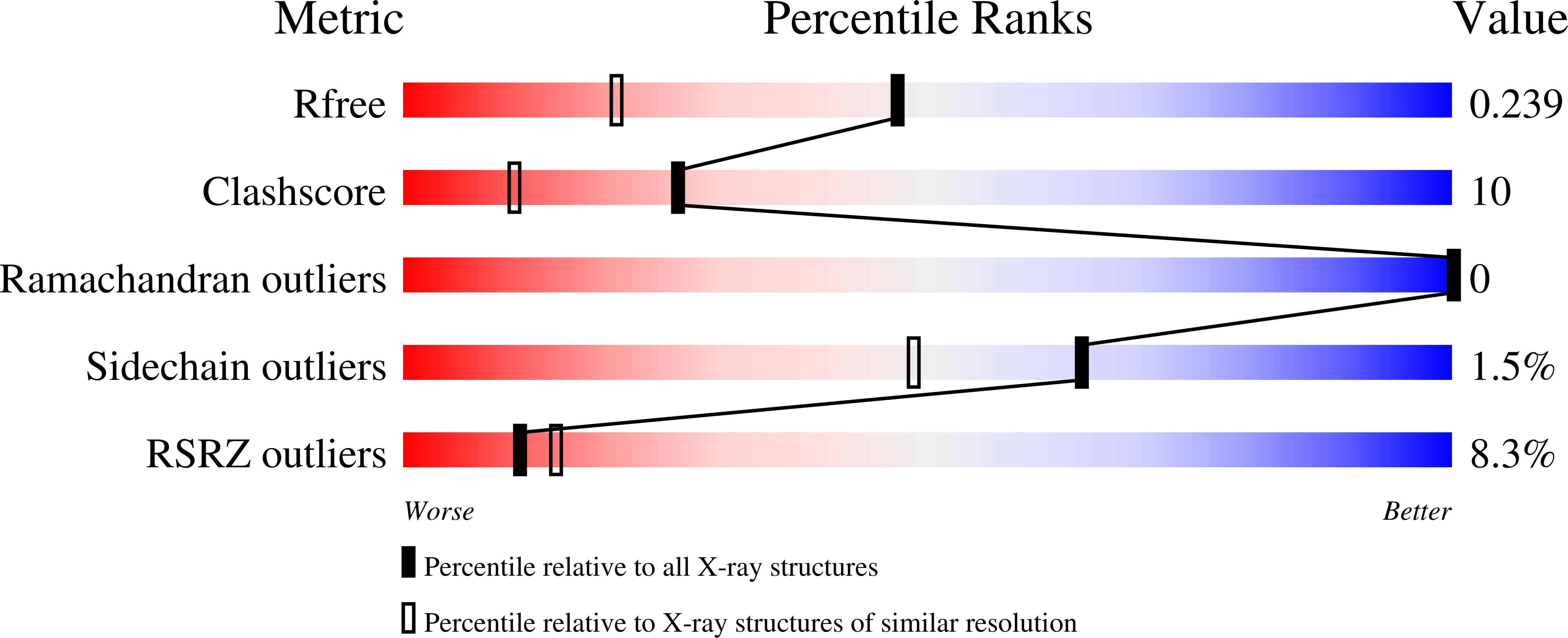
Deposition Date
2005-07-13
Release Date
2006-07-25
Last Version Date
2023-08-23
Entry Detail
PDB ID:
2AA0
Keywords:
Title:
Crystal structure of T. gondii adenosine kinase complexed with 6-methylmercaptopurine riboside
Biological Source:
Source Organism:
Toxoplasma gondii (Taxon ID: 5811)
Host Organism:
Method Details:
Experimental Method:
Resolution:
1.75 Å
R-Value Free:
0.24
R-Value Work:
0.20
R-Value Observed:
0.20
Space Group:
P 21 21 21


